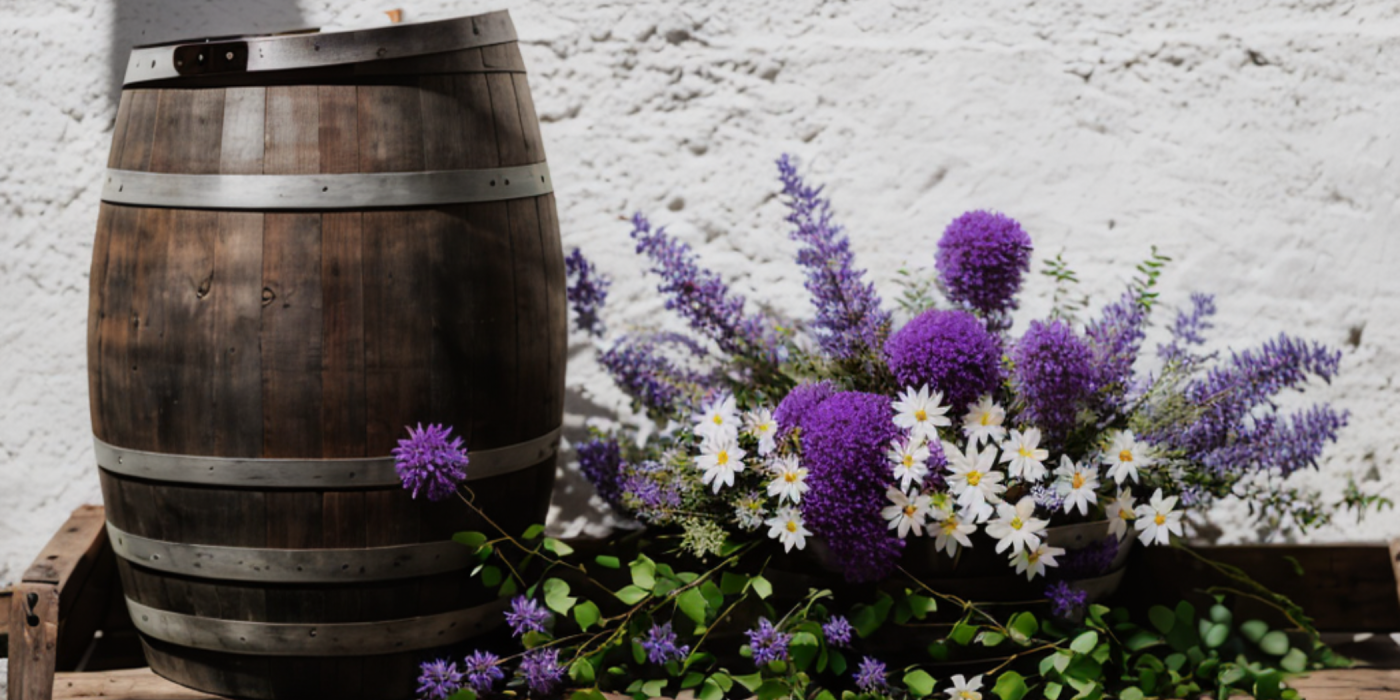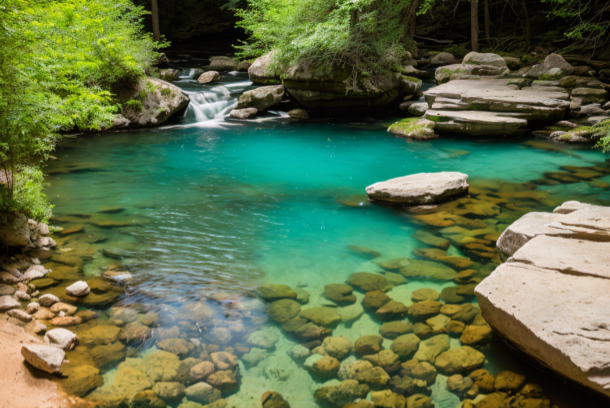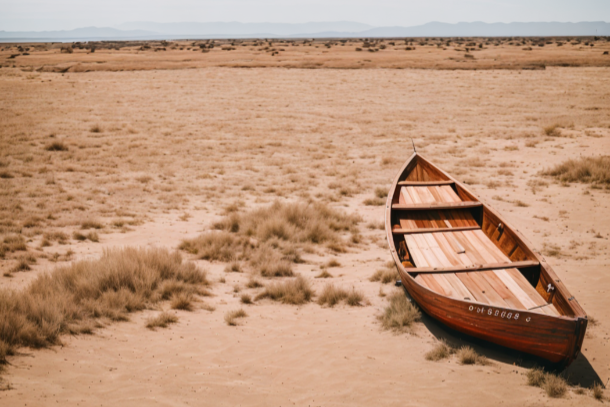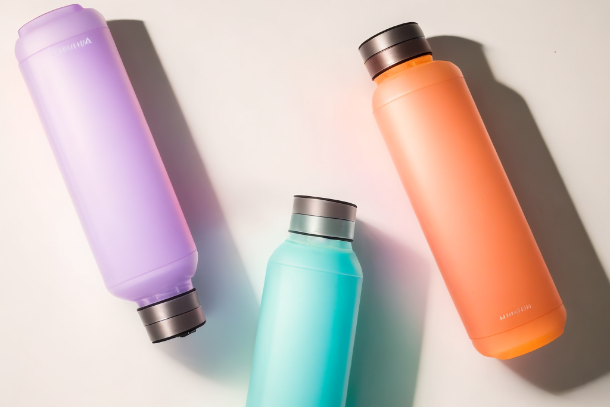Harvesting Rainwater: A Comprehensive Guide to Rain Barrels and Water Storage

In a world increasingly conscious of its environmental impact, the need for sustainable solutions in all areas of life is more important than ever. One such solution that has seen a resurgence of interest in recent years is the rain barrel. Used for centuries but often overlooked in our modern era, this simple device offers a wealth of benefits not just for the individual user but for our broader communities and the environment as a whole.
A Brief Overview of Rain Barrels
Rain barrels, also known as water butts in the UK, are containers used to collect and store rainwater runoff, usually from rooftops via rain gutters.
Function and Utility
They are a practical tool for any homeowner, serving a dual function of conserving water and reducing runoff, a significant contributor to erosion and water pollution. This stored water can be used for a variety of purposes where potable water isn't necessary, such as gardening, lawn care, and outdoor cleaning tasks.
The Importance of Rainwater Harvesting
The practice of collecting rainwater in barrels forms part of a broader strategy known as rainwater harvesting, which is becoming increasingly crucial in today's world.
Environmental and Economic Benefits
Rainwater harvesting through the use of rain barrels not only reduces the demand on our public water supply system but also decreases the amount of energy used to treat and transport water to households. Furthermore, it helps homeowners save on their water bills by providing an alternative source of water for outdoor uses. This sustainable practice, therefore, has a significant role to play in both environmental conservation and economic efficiency.
The Historical Journey of Rain Barrels
Rain barrels, although seemingly a modern tool for sustainable living, have a rich history dating back thousands of years. They've played a crucial role in civilisations across the world due to their utility in water conservation.
Origins and Historical Use of Rain Barrels
Rain barrels, or similarly functioning contraptions, have been used for millennia. Ancient civilisations such as the Romans are known to have utilised sophisticated rainwater harvesting systems for agricultural and domestic water supply. Roman aqueducts, a marvel of ancient engineering, often incorporated rainwater collection.
Even earlier, around 2000 BC, the residents of the Bronze Age Minoan Crete utilised cisterns and channels for rainwater storage and distribution. In these times, such systems were a matter of survival, especially in arid regions where freshwater sources were scarce.
Evolution of Rain Barrels over the Years
Over centuries, the use and design of rain barrels have continually evolved. From rudimentary stone or clay vessels, we've moved to use more durable and lightweight materials such as wood and, more recently, plastic and metal.
The 20th century brought about a major shift. With the advent of piped water, rain barrels became less common in developed regions. However, the recent surge in interest towards sustainability and self-sufficiency has reignited the popularity of rain barrels.
Today, modern rain barrels are not only functional but also aesthetic, often designed to blend seamlessly with the landscape. From being a necessity for survival to becoming a tool for environmental responsibility, the rain barrel certainly has an intriguing history.
Understanding Rain Barrels
A rain barrel, known in some circles as a rainwater tank or a water butt, is a simple yet highly efficient tool for rainwater harvesting. Essentially, it is a barrel or container used to collect and store rainwater that flows from your roof, typically via guttering and a downspout.
Detailed Description of Rain Barrels
Rain barrels come in all shapes and sizes, ranging from compact designs that hold about 50 litres of water to large-scale models capable of storing over 1,000 litres. Most modern rain barrels are manufactured from durable materials like plastic or polyethylene, although you can also find them made from metal or wood. They usually feature a spigot for watering garden plants, an overflow valve, and a mesh screen on top to filter out debris and prevent mosquitoes from breeding in the collected water.
How Rain Barrels Work
Rain barrels work on a simple principle: collection and storage of runoff rainwater for later use. The process starts with rain falling on your rooftop. This water is then channelled through your home's guttering system and directed into the rain barrel via a downspout. The collected water is stored until needed, typically for outdoor watering tasks such as gardening, lawn care, or even washing cars. This simple mechanism not only conserves water but also contributes significantly towards reducing your overall water bill, making rain barrels a cost-effective and eco-friendly addition to any home.
The Benefits of Using Rain Barrels
Rain barrels provide a plethora of advantages that go beyond simply collecting water. They offer environmental, economic, and gardening benefits, each of which we'll explore further.
Environmental Advantages of Rainwater Harvesting
Rain barrels help to mitigate the impact of stormwater runoff, which can erode landscapes and carry pollutants into our waterways. By collecting rainwater, we reduce the amount of runoff and, consequently, the level of pollution reaching our rivers and seas. Furthermore, rainwater harvesting helps to conserve a valuable resource, particularly important in times of drought or water restrictions.
Economic Benefits: Water Bill Reduction and Other Financial Savings
For those on a water meter, rain barrels can contribute to significant savings on your water bill. The collected rainwater can be used for various outdoor activities like watering the garden, washing the car, or cleaning garden furniture. This utilisation of rainwater reduces the demand for treated tap water. In areas with heavy rainfall, the savings could be substantial over time.
Gardening Advantages: Providing Nutrient-Rich Water for Plants
Rainwater is naturally soft and devoid of chlorine, lime, and other chemicals found in tap water. This makes it ideal for watering plants as it maintains the natural pH balance of the soil and helps to ensure the health of the plant microbiome. It's particularly beneficial for acid-loving plants such as rhododendrons and azaleas. Additionally, in using a rain barrel, you have a ready supply of water for your garden, irrespective of hosepipe bans during dry periods.
Exploring Different Types of Rain Barrels
Rain barrels come in a wide variety of materials, sizes, and designs, each with its own unique features and benefits. Understanding these differences can help you select the right rain barrel for your garden and specific needs.
Overview of Different Materials
Rain barrels are typically constructed from three main materials: plastic, wood, and metal.
Plastic Rain Barrels
Plastic is the most commonly used material due to its durability and affordability. It's lightweight, resistant to rot, and easy to clean. However, it's worth noting that plastic barrels should be UV-resistant to prevent degradation in sunlight.
Wooden Rain Barrels
Wooden rain barrels offer a rustic and aesthetic appeal. They're typically made from treated timber to withstand water exposure, but they require more maintenance than plastic or metal barrels. They can also be a bit pricier due to their craftsmanship.
Metal Rain Barrels
Metal rain barrels, often made from stainless steel or aluminium, are robust and long-lasting. They have a sleek, modern look but can be more expensive and heavy to manoeuvre.
Description of Various Sizes and Designs
Rain barrels come in a range of sizes, from compact 50-litre barrels for small gardens to large 200-litre barrels for extensive rainwater collection. In terms of design, they range from simple, functional barrels to more decorative options that mimic terracotta, stone, or wood to enhance garden aesthetics.
Special Features
Modern rain barrels often come with additional features such as rain gauges to measure rainfall, overflow valves for managing excess water, and screens or filters to keep out debris and mosquitoes. These features add to the functionality and ease of use of the rain barrels.
Installation of Rain Barrels
When it comes to installing a rain barrel, the process is rather straightforward. However, a few key considerations can ensure you optimise the benefits of your rain barrel while maintaining a safe and functional setup.
Choosing the Right Location for a Rain Barrel
The most suitable place for your rain barrel is directly underneath a downpipe from your guttering system. This location should also be near areas of high water usage, such as your garden or lawn, to ensure efficient utilisation. Another important factor is the stability of the ground; it should be flat and sturdy to hold the weight of a full barrel, which can be quite substantial.
Step-by-Step Installation Guide
1. Position the Rain Barrel
Place your rain barrel under the downpipe. Ensure the barrel is stable, and if needed, construct a secure platform to elevate the barrel for easy access to the tap at the bottom.
2. Adjust the Downpipe
Cut the downpipe to direct water into the rain barrel. Be sure to measure correctly so the cut section aligns with the top of your barrel.
3. Attach a Diverter
Install a downpipe diverter to direct the flow of water into your rain barrel. The diverter will also redirect water back down the pipe when the barrel is full, preventing overflow.
Safety Measures and Precautions
Once the rain barrel is installed, regular inspections are vital to prevent leaks, overflows, or mosquito breeding. Consider using a mosquito-proof screen or adding natural mosquito repellents to the water. Additionally, secure the barrel, particularly if there are children around, to avoid any tipping hazards.
Maintaining Your Rain Barrel: Essential Tips and Procedures
Cleaning and Winterising Procedures
Regular cleaning of your rain barrel is crucial to ensure it functions optimally and lasts for many years. Ideally, one should clean their barrel at least twice a year, more often if the barrel is under a tree with significant leaf fall.
Cleaning Procedure
First, drain the barrel completely. Using a long-handled brush, scrub the interior of the barrel to remove any residue or algae. Rinse thoroughly and let it dry.
Winterising Procedure
In the UK, winterising your rain barrel is important due to potential freezing. Drain your barrel completely before the first frost of winter, and keep the tap open to prevent any residual water from freezing and cracking the barrel. If possible, store it upside down or in a shed or garage.
Checking for Leaks and Other Repairs
Perform regular checks for leaks, especially around the tap and any seams in the barrel. If you detect a leak, drain the barrel and apply a waterproof sealant to the area.
Additionally, inspect the screen on the top regularly to ensure it's intact and effectively keeping out debris and insects. Replace if necessary.
Tips for Optimal Usage
To get the best out of your rain barrel, remember to use the collected water regularly to prevent it from becoming stagnant. Always ensure the overflow valve is directed away from your property's foundations to avoid water damage. If your rain barrel isn’t filling as expected, check your gutters and downspouts for blockages.
By following these maintenance steps, you can extend the life of your rain barrel and maximise its benefits.
Understanding Rain Barrel Regulations in the UK
Navigating the legal landscape of water collection in the UK may seem a bit daunting. However, understanding these regulations can help you make the most of your rain barrel while staying within the boundaries of the law.
Legal Considerations for Rainwater Harvesting
In the UK, rainwater harvesting is generally legal and encouraged. However, it is essential to note that the collected water should primarily be used for non-potable purposes such as garden irrigation, washing cars, or flushing toilets. If you plan to use the rainwater for drinking, it will require appropriate treatment and purification.
In addition, you should take into account your local council's regulations, as they may have specific rules regarding the placement and appearance of rain barrels, especially in areas of outstanding natural beauty or conservation areas.
Water Rights and Collection Limitations
Water rights typically refer to the legal right to extract and use water from a water source (such as a river or groundwater). Fortunately, these rights usually don't apply to rainwater collection from your own roof. Hence, there is generally no limit to the amount of rainwater you can collect.
However, if you are drawing water from a natural water source on your property, such as a spring or a stream, you might require a water abstraction licence from the Environment Agency.
Remember, regulations can change and may vary by region, so always check with your local council and the Environment Agency for the most accurate information.
Where to Buy Rain Barrels in the UK
Whether you're a seasoned gardener or a beginner in sustainable practices, investing in a rain barrel is a commendable step towards environmental conservation. Here's where you can get started.
Recommendations of Reliable Online Suppliers
Water Butts Direct
Water Butts Direct offers an extensive range of water butts, rain barrels, and related accessories. They have products to suit all tastes and budgets, from basic models to more ornately designed rain barrels.
Gardeners' World
While primarily a source of gardening advice, Gardeners' World also has a marketplace section that often features high-quality rain barrels from trusted suppliers.
Amazon UK
As one of the largest online marketplaces, Amazon UK offers a wide range of rain barrels from various brands. Remember to check customer reviews before making a purchase to ensure quality and reliable delivery.
Guide to Choosing the Right Rain Barrel
Choosing the right rain barrel depends on several factors, such as your available space, budget, and aesthetic preferences.
Firstly, consider the size of your garden and the average rainfall in your area. Larger barrels are ideal for spacious gardens and regions with high rainfall.
Secondly, think about the material of the rain barrel. While plastic barrels are common and relatively inexpensive, you might prefer the natural look of a wooden barrel.
Lastly, you may wish to consider features such as a rain gauge, a tap at the base for easy access, or a child-lock lid for safety.
Remember, the right rain barrel is one that meets your needs and contributes to making your garden a more sustainable space.
Conclusion: Embrace the Potential of Rain Barrels
As we draw to a close, it's beneficial to revisit the key advantages of utilising rain barrels in your garden or outdoor space.
Reaping the Rewards of Rainwater Harvesting
Rain barrels provide a simple yet effective means of collecting and storing rainwater. Not only does this help to reduce reliance on municipal water supplies, thereby decreasing your water bills, it also ensures a plentiful supply of soft, chemical-free water for your garden. Moreover, rain barrels play a part in the broader context of environmental conservation. By mitigating stormwater runoff, they contribute to reducing soil erosion and water pollution.
A Call to Action: Adopting Rainwater Harvesting
The installation and maintenance of a rain barrel are straightforward processes, making it a feasible endeavour for most households. With the varied selection of rain barrels available in the market today, you can find a solution that fits your specific needs and aesthetic preferences. Remember, every drop of rainwater we can put to good use is a step towards greater water efficiency and a more sustainable future.
The journey of water-conscious gardening does not stop here. There are plenty of other practices and tools you can explore to make your garden even more water-efficient. So why not make the move and invest in a rain barrel? Not only will you be doing your bit for the environment, but your garden will also thank you for it!
Further Reading and References
Throughout the compilation of this article, a variety of dependable resources were consulted. For those seeking to expand their understanding of rain barrels and rainwater harvesting, the following references are recommended.
Cited Sources
Rainwater Harvesting for Drylands and Beyond by Brad Lancaster
A well-renowned expert in the field, Lancaster provides an invaluable resource on all aspects of rainwater harvesting.
The Water-Wise Home: How to Conserve, Capture, and Reuse Water in Your Home and Landscape by Laura Allen
This practical guide includes information on a range of water conservation methods, including the use of rain barrels.
Further Reading on Rainwater Harvesting and Rain Barrels
The New Create an Oasis with Greywater: Integrated Design for Water Conservation by Art Ludwig
While this book primarily focuses on greywater systems, it also includes insightful sections on other water conservation tools like rain barrels.
RHS: Water Management
The Royal Horticultural Society provides an extensive guide on managing water effectively in your garden, with a specific section dedicated to the use of rain barrels.
The Complete Guide to Water Storage: How to Use Gray Water and Rainwater Systems, Rain Barrels, Tanks, and Other Water Storage Techniques for Household and Emergency Use by Julie Fryer
This guide presents a comprehensive view of water storage techniques for both everyday use and emergency situations, with particular emphasis on the use of rain barrels.
Related to this article are the following:
I do hope you have enjoyed this article and hope that you will subscribe to my newsletter so you can get the latest information about all things naturally relaxing.
Stay in touch, join the Naturally Relaxing Newsletter
Newsletter Signup
Post Your Comments
or post as a guest
Be the first to comment.
Latest articles in Water
Idea is to do article on waterfall

Finding the Perfect Swimming Hole: Your Comprehensive Guide

Exploring Sea Deities Around the World: A Dive into Global Mythologies

Creating Resilient Gardens: An Expert Guide to Drought-Tolerant Landscaping

The Bottled Water Dilemma: How Many Bottles Do You Need for a Gallon?






